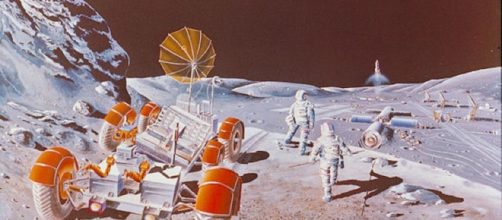It looks like NASA will not be the only national space agency to leverage commercial lunar landers to return to the moon. The European Space Agency is reaching out to commercial providers to provide a lander for a mission it calls “In-Situ Resource Utilization Demonstrator Mission.” The idea is to test technologies that would use lunar resources such as water to leverage human occupation of the moon.
Why use a commercial lander?
The ESA has come to recognize that commercial companies will be able to provide a lunar lander to take anything they desire to the moon’s surface much cheaper than if it were to develop one from scratch.
With a number of private entities getting ready to land on the moon, some as part of the Google Lunar XPrize, and some outside that competition, an entirely new industry is about to come into being. Transportation services to the Lunar Surface are about to become a reality.
How can lunar explorers utilize the moon’s resources?
When the Apollo astronauts ventured to the moon, they carried enough consumables, air, water, food, and power to sustain themselves for a long as three days during the later missions from Earth. When people return to the moon in greater numbers and for longer stays, clearly a supply chain stretching back to Earth would be impractical. Hence, various national space agencies such as NASA and the ESA and commercial companies are exploring ways to sustain people while there are on the moon.
Water can be mined from the lunar poles and either refined into rocket fuel or used as a consumable. Oxygen can be extracted from lunar soil. Eventually, plants can be grown in greenhouses that can be used for food and also recycle carbon dioxide back into oxygen. The possibilities are boundless.
What happens next?
The request for information was somewhat vague as to what would constitute an “In-Situ Resource Utilization Demonstrator Mission.” No doubt the parameters of the mission will evolve during conversations with commercial companies which will reveal what kind of capabilities they are prepared to offer and when.
After 35 years, the attention of the world is focusing back toward the moon. To be sure, return to the moon programs have started before, only to fizzle out due to politics. This time feels different. Too many countries, China, India, and Russia besides the United States and the EU, are interested in accessing the moon and its bounty. Commercial launch systems and now lunar landers are opening up the moon to smaller countries and even commercial endeavors. The new age of lunar exploration is at hand.


